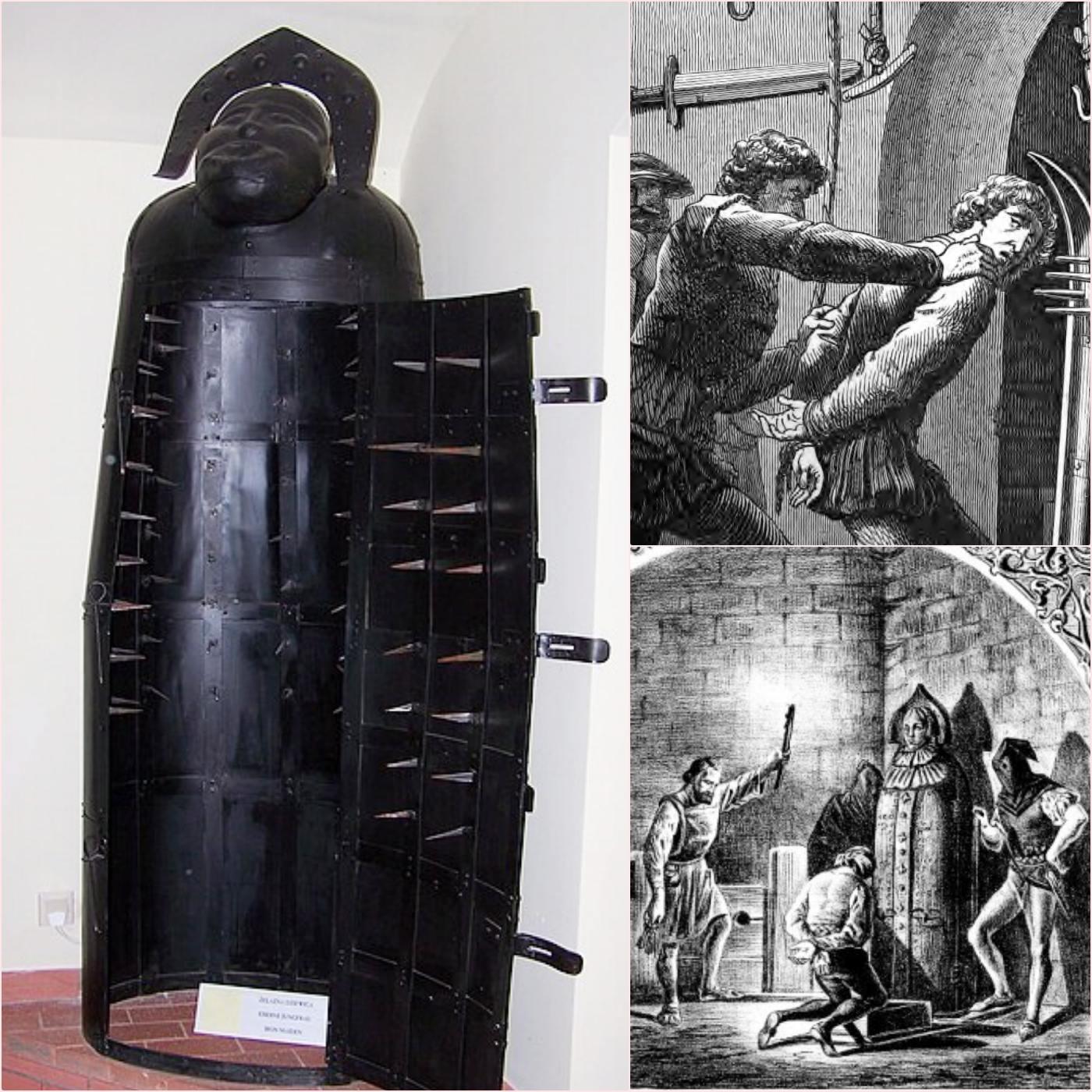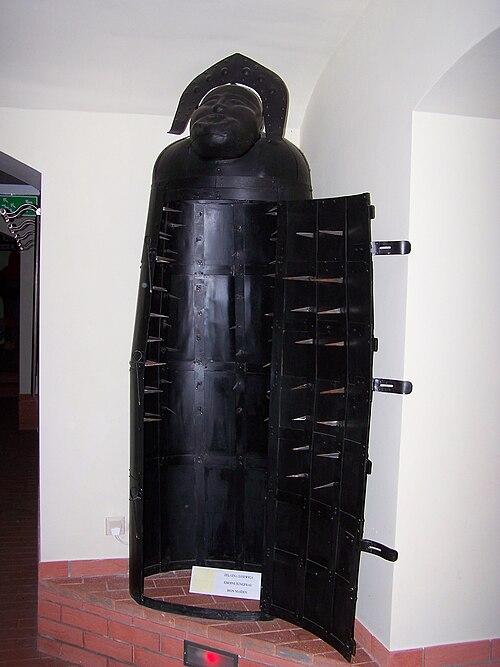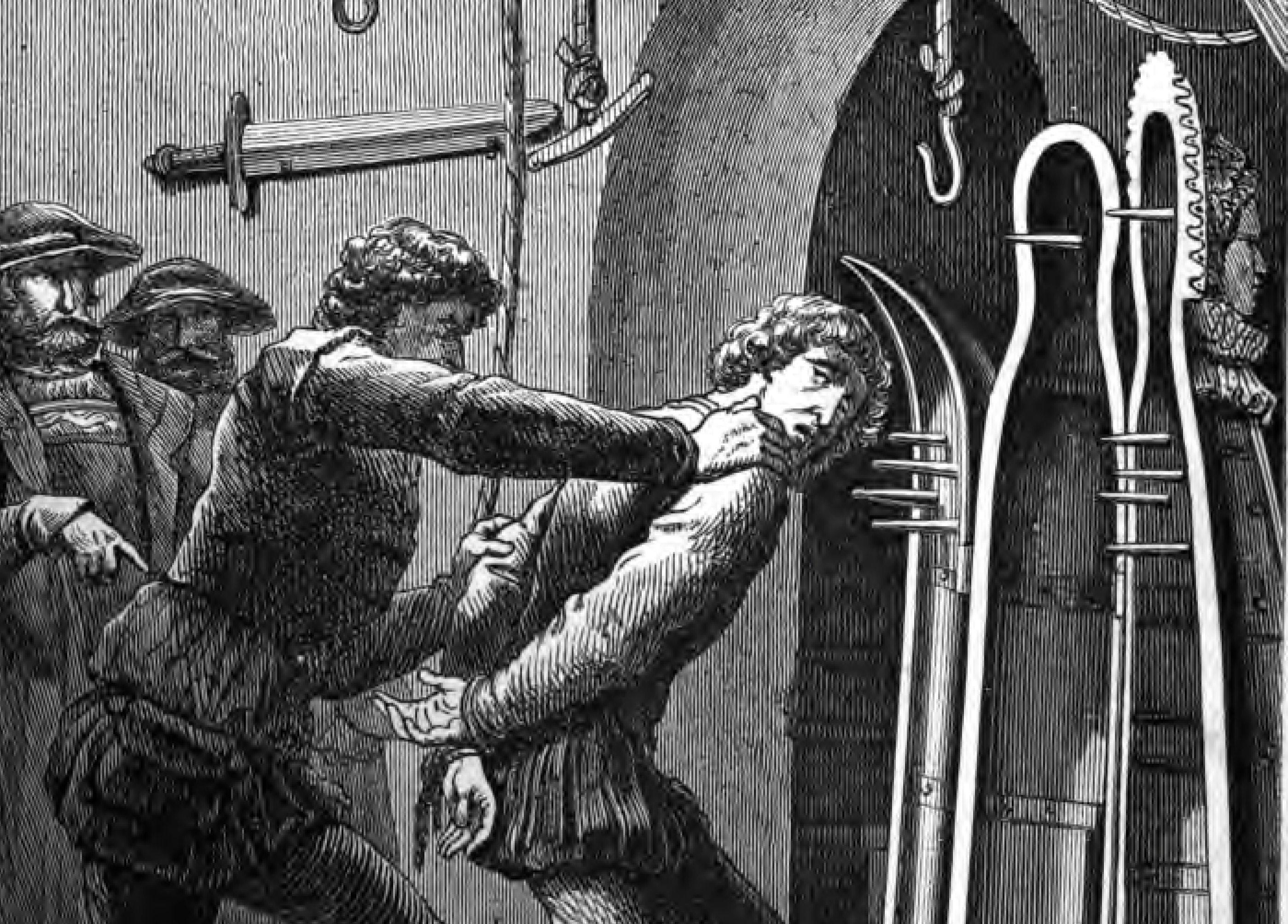The Iron Maiden, a medieval torture device shrouded in mystery and horror, is often cited as one of the cruelest devices in history. This sinister device, allegedly used in the Middle Ages, has captured the popular imagination with terrifying tales, but its true history is far more complex and nuanced than it seems. Behind the sensationalist accounts lies a truth that blends myth, reality, and historical exaggeration, revealing secrets that still surprise today.

The Iron Maiden is described as a metal sarcophagus in the shape of a woman, often adorned with delicate features, concealing an interior bristling with sharp spikes. According to legend, the victim was locked inside, and the doors slowly closed, the spikes piercing the body in prolonged agony. This gruesome image fueled the idea of boundless medieval cruelty, where barbarism reigned supreme. However, modern historians question the widespread use of this device in the Middle Ages. In fact, the first reliable mentions of the Iron Maiden appear much later, in the 19th century, in accounts by historians and Romantic writers fascinated by the idea of a dark and brutal past.

The origins of the Iron Maiden appear to be more a matter of propaganda and imagination than common practice. In the 18th and 19th centuries, European museums and exhibitions, eager for sensationalism, displayed “medieval artifacts” to attract crowds. The Iron Maiden, with her elegant yet terrifying appearance, was perfect for captivating audiences eager for horror. Exaggerated accounts, such as those associated with Nuremberg Castle, helped forge the myth of a ubiquitous instrument in medieval dungeons. Yet historical records show little concrete evidence of its use prior to these modern accounts. Medieval torture methods, while cruel, favored simpler tools such as the rack, heated irons, or quartering.

This does not mean that the Iron Maiden is a pure invention. Some historians suggest that she may have been inspired by real devices, such as instruments of punishment used in isolated cases or experimental prototypes. For example, there are accounts of “iron cloaks” or spiked cages in some parts of Europe, but their use was rare and far from systematic. The fascination with the Iron Maiden reflects more a desire to demonize the Middle Ages, often perceived as a period of darkness, than the reality of the practices of the time.

Ultimately, the Iron Maiden is as much a symbol as an object. She embodies the fear of the unknown, the fascination with cruelty, and the human tendency to exaggerate the past to serve modern narratives. Her story, while less bloody than one might think, remains a fascinating testament to how myths are born and endure, captivating minds with their blend of horror and mystery.





